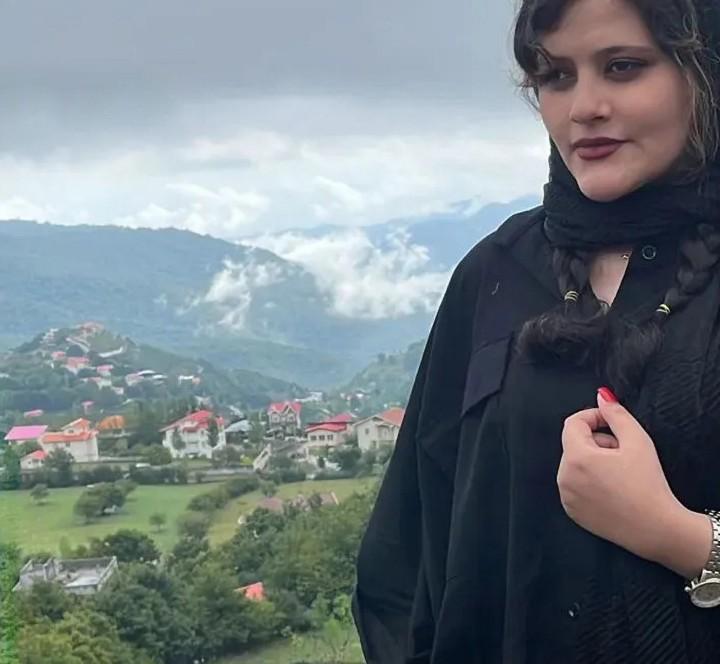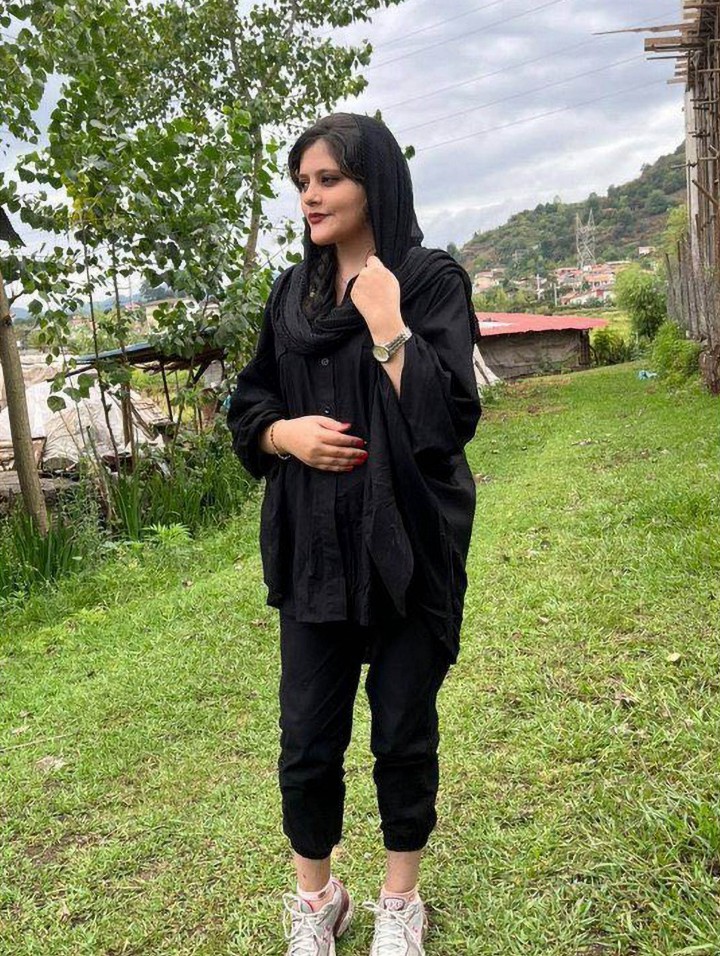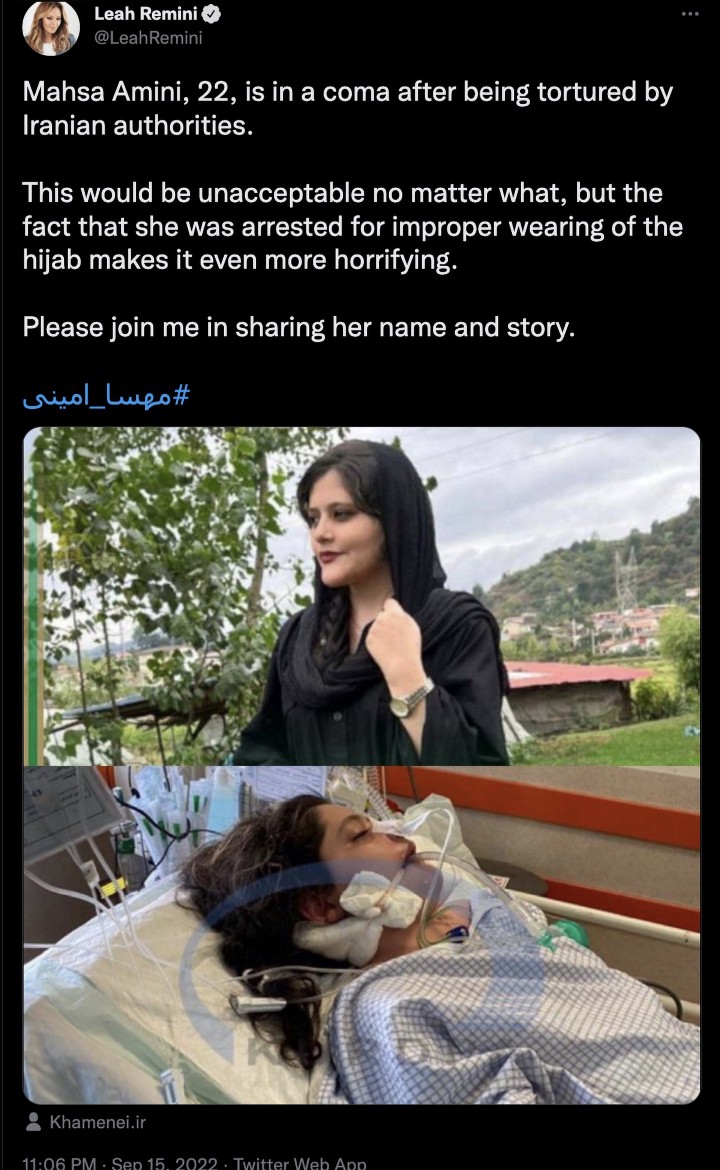How Tabloid Media and A-Listers Cooperate on Human Rights in Iran
There is no copyright on facts.

It has been one of the defining stories of the year.
How the death of a young woman after she was held by Iran’s morality police ignited a worldwide outrage that threatened the brutal state’s grip on power.

Mahsa Amini, 22, poses in an undated photo. She died after the country’s morality police reportedly beat her into a coma when she was arrested over her hijab.
It didn’t come from one of the household name roster of international news agencies like Reuters, AP or AFP.
Nor was it from a dashing, heroic TV correspondent or a celebrated foreign correspondent from a national newspaper.
It broke because an agency — our agency, in fact — keeps a Farsi speaker on staff who knows her way around the official and highly unofficial sources in the Islamic Republic.
From there it was back to a small team of writers, editors, subs, and video and picture editors, and then out into the world on our very well-read feed.
At first a small, local story about the cruel death of a young woman who fell foul of Iran’s hijab laws, it then snowballed into an international cry of fury sweeping up in its path Washington, Hollywood and even Hogwarts.
When people think of news agencies, they probably have something like Reuters or Associated Press in mind.
But these are only the most obvious examples of the profession that, in the UK at least, actually ranges from one-man operations through to editorial teams larger than many national newspapers.
Many are a loose alliance of photographers and writers, who come together under a single brand to sell news.
And the only way to sell news is to be first, to be best and to get it right.
Not easy when one news agency director revealed this month that his daughter earns more money babysitting than he does from journalism.
There used to be hundreds of agencies. Many have now vanished, and those that remain are often shadows of their former selves.
That’s because the news agency model is broken.
It has little support, even from the publishers that benefit from content provided at prices where it should be impossible not to make a profit by using it.
You might imagine that in an era when national newspapers are shredding staff faster than top secret documents at Mar-a-Lago, freelancers would be in a golden age.
No office costs, no phone bills, no entertaining, no national insurance. Nothing to pay for but the stories.
The reality is a bit different.
Jon Harris, the chairman of the National Association of Press Agencies and managing director of Manchester-based news agency Cavendish Press, said in a recent article on payments for agencies in Press Gazette that national newspapers will typically charge advertisers £30,000 for a full-page advert. Yet a page lead which will be the main story on the top of the page will earn just £120 for agencies or freelancers.
He described these rates as being in a “timewarp” and no longer sustainable, and illustrated it with the fact that his daughter can earn more money from babysitting than he could through journalism.
Agencies and indeed freelance journalists who face all of the risks of staff journalists of being sued or victimised, yet have none of the support network, have to survive on what is effectively almost Dickensian pay — despite filing quality content to media partners on a daily basis.
If I had to list one factor that defines the sort of people that are prepared to work seven days a week with no guarantee of any money at the end of it, and working hours that even a junior doctor would balk at, it would be this:
News agencies are the last refuge for people who care about news, and don’t want to be told how to do it.
More than anything, this essential characteristic means news agencies should be the future, building brands that can serve everything from globe-spanning media conglomerates to small hyper-local ventures.
In our case, our business model couldn’t be more direct or open.
We use tabloid news to generate revenue and to teach our staff to write news in a way that people want to read it. The revenue this generates then pays for quality news and investigations.
And tabloid media, of course, also deals with serious issues but puts them in a readable form.
The rights of women, children or animals, are often championed first in shocking tabloid tales.
On Friday, 16th September, the tragic story of Mahsa Amini was a classic example of a story we managed to get on the world’s news radar simply because we have a feed that everybody in Fleet Street watches.
The young Kurdish woman was beaten to death in Iran for not wearing a hijab as ordered by the ultra-Islamic state.
She’d been seized by Iran’s morality police and taken for a ‘correction’ lesson that left her brain dead with a fractured skull.
The story was identified on Instagram by our correspondent, who submitted it to one of our commissioning editors on Wednesday [21st September].
It was rejected because there was not enough independent verification, and so she worked on it overnight to get more information and resubmitted it the next day.

Mahsa Amini, 22, poses in an undated photo. She died after the country’s morality police reportedly beat her into a coma when she was arrested over her hijab.
It was accepted on Thursday, and then further checks were carried out, and by Friday it was sent when we were confident it was correct.
We cover stories like this because they need to be covered, even though we often have little expectation of making much penetration with them.
It could have been dismissed as just another brutal beating in a country where state cruelty and violence are par for the course.
But on this occasion — even though the funeral of the Queen was filling newspapers from front to back — something special happened.
The story took off in the Sun, Mirror and Telegraph and then worked its way all around the world.

Mahsa Amini, 22, poses in an undated photo. She died after the country’s morality police reportedly beat her into a coma when she was arrested over her hijab.
It also moved on to social media, when Harry Potter author J. K. Rowling started tweeting about it, followed quickly by Hollywood legend Sharon Stone.
Then came tech giant Elon Musk who revealed he was to provide the internet to Iran’s much repressed ordinary people via his Starlink satellite.
Our correspondent who filed it and put the effort into getting the information to stand it up is also an Iranian woman.
She said: “Religious belief should be a personal choice as it has been throughout history, including the entire era of Islam. It is unbelievable that it has been turned into a political and security issue in the name of defending that belief.
“Yes, we put this one terrible story on the international agenda, but it was just one of many examples where so many Iranian women, including myself, have suffered. I am glad that finally, now, people are starting to hear the voices of Iranian women, and to see how the world has responded in support of women who are risking their lives for what should be a basic human right.”
This story is far from over, and press coverage providing the oxygen of publicity is all we can do to help them. We have and will continue filing stories on the issue, and have added the fact that Iran had started using an elite female fighting force to infiltrate and roundup female ringleaders, with an interview in which the female commander pointed out that it was inappropriate for male colleague to carry out the arrests.
We also highlighted how Iraninan woman journalists who had reported on the story locally had been jailed.

Mahsa Amini, 22, lies in hospital bed in an undated photo. She died after the country’s morality police reportedly beat her into a coma when she was arrested over her hijab.
But this story is also one extreme example of how important news agencies can be, and although we are larger than most, even one-man operations, that have earned the right to file directly into the editorial queues of our partners alongside staff journalists and correspondents, have enormous power and influence.
But as we grow smaller and fewer in number, many of our partners have forgotten this, and requests for payment are not even dealt with by desks any more, they are dealt with by complaints officers or accounts staff who seem to have little understanding of how we work.
One Fleet Street news editor once told me that his legacy from the previous incumbent was a desk draw crammed full of printouts of unpaid invoices.
On Friday night, I was doing the usual round of requests for media partners who had “forgotten” to credit us for our work, which means no payment to fund correspondents like the Iranian journalist working on this story.
It included one national paper that had missed our credit on a picture we sent them, or indeed any mention of our involvement in this story.
There is no copyright on facts, only on word order, and their story was a rehashed summary of the last few days into a single story, and used many of the images we had also provided, but which they had sourced themselves, and therefore did not have to pay for.

Photo shows the Twitter post of the American actress Leah Remini, undated photo. She posted pictures of Mahsa Amini and asked Twitter users to share Amini’s story. Note: Picture is a screenshot from a post (@LeahRemini/Newsflash)
One of the pictures they used, however, had our metadata, which we can define as a way of marking that we were the source of the image.
To address the issue of when a news agency has the right to distribute an image would need a book that changes daily, and from region to region, but we simplify the debate by making the fee for the journalism involved in obtaining and verifying and making fit for publication the material we provide.
Someone needs to pay for a global network of correspondents and when it comes to images which have our metadata, it needs to be paid because it means out network sourced it.
The newspaper’s complaints officer claimed that it had been supplied by another news agency, but I pointed that it was for them to sort out with the other agency, who it is to be assumed cut and pasted it from one of our other clients.
In the end, as of today, the credit is still incorrect and more than 48 hours later we have still not been offered any explanation as to why they don’t want to change it, despite the fact that it’s obviously a breach of our arrangement where we are not a tipping service, and we expect our content to be credited.
I am not blaming bean counters and complaints staff at partner publications that don’t understand this, staff numbers are falling, putting pressure on those staff remaining, and it’s exhibited by the fact that stories that are a natural fit are all too often not being published.
But this small example and the background to it underlines that the classic agency model is broken, media partners are not going to start paying more, and what is galling is there is almost no discussion on what can be done about it.
There are literally dozens of ways that news agencies could fund their operations that don’t bring into doubt their credibility.
Year after year journalism is listed as the worst job in the world, and the reason for writing this article is that it should be the best. This is not the first story like this we have done, and it will not be the last.
The point of this article is that we need to start a dialogue about exactly what is news and how we consume it, and in order to do that, even the forgotten parts like the hundreds of tiny UK news agencies that provide a large percentage of the raw material to the media giants should not be forgotten.
Michael Leidig is a veteran editor and journalist based in Europe.
This article appeared first on Medium.